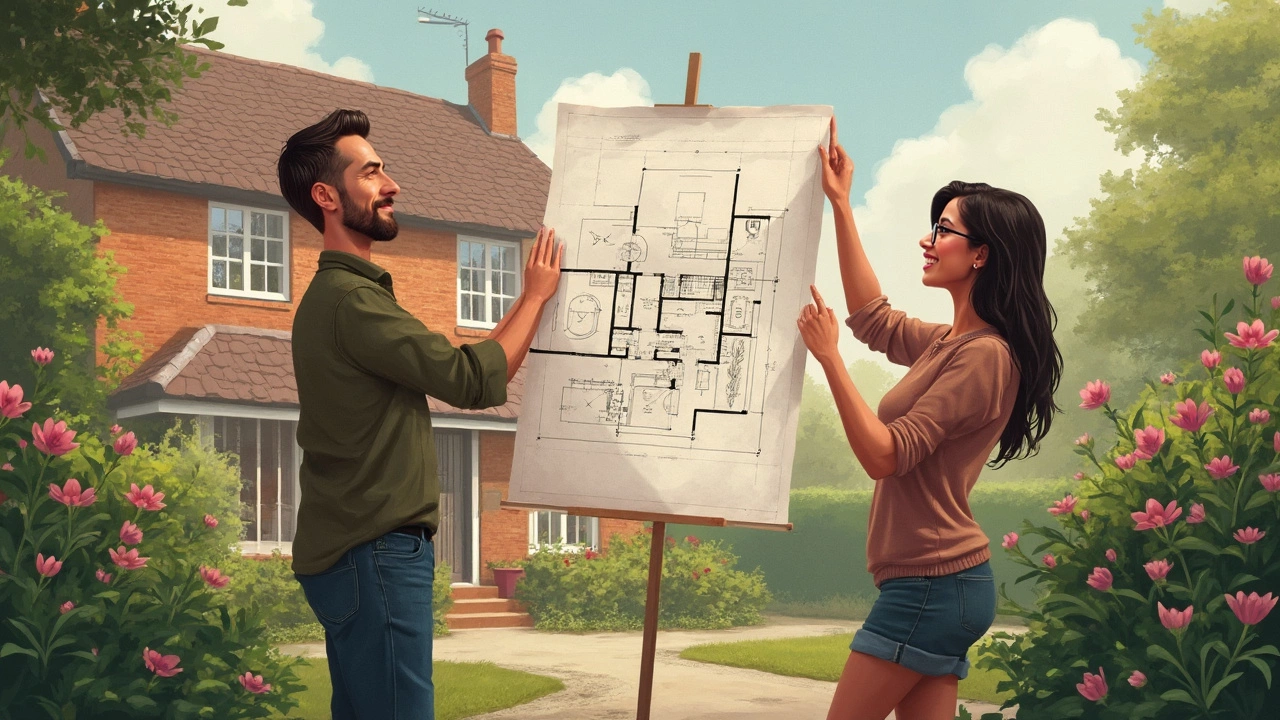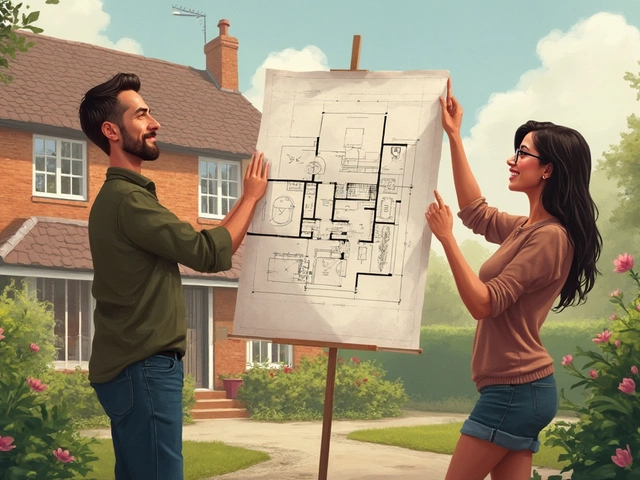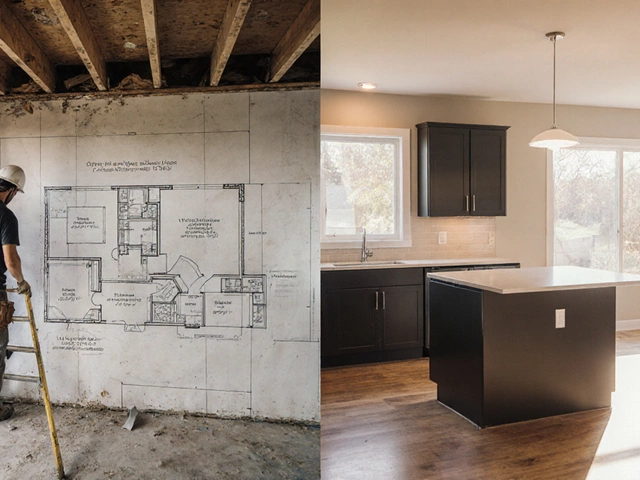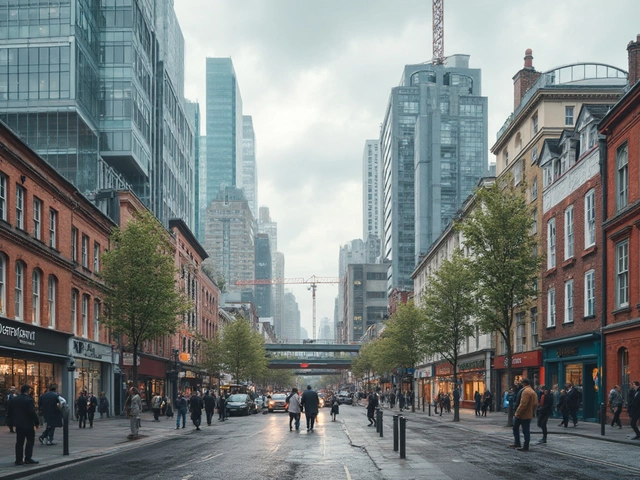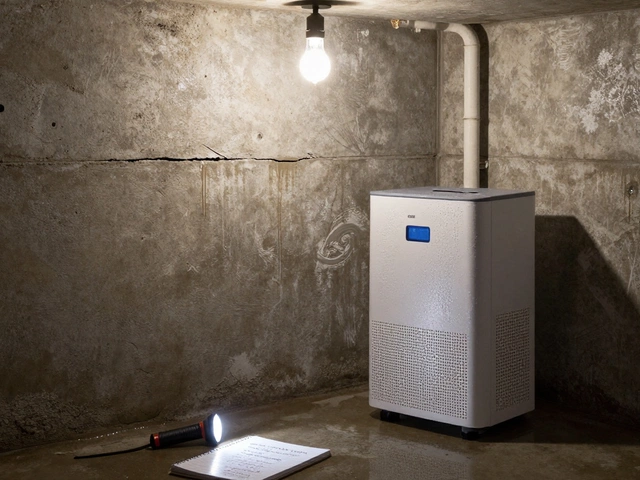House feeling tight? You're not alone. Most folks eventually want more space, whether for a new bedroom, a home office, or just some breathing room. It always comes down to the same question: is it cheaper to build up or expand out?
This isn’t just about laying bricks or putting up walls. Building up—adding a new level—sounds cool, but it can be a shock to your budget. It often means bolstering your foundation, reinforcing walls, and dealing with staircases or complex roof work. Even if your home's shell seems sturdy, surprise costs can creep in fast.
Expanding out, on the other hand, might seem easy: you just add more room on the side or back. But that means digging, pouring concrete, and probably kissing some of your yard goodbye. The price tag here depends on land costs, local zoning rules, and how much digging or site prep is needed.
Bottom line? There's no universal winner—your home, property, and wallet all play a role. But knowing where the usual costs pile up means you can plan smarter from the start. If you skip this research, don’t be surprised if your “quick extension” becomes a money pit.
- The Real Cost Factor: Up vs. Out
- Hidden Expenses Most People Miss
- Speed Bumps Along the Way
- Making the Smartest Choice for Your Wallet
The Real Cost Factor: Up vs. Out
When you stack up the numbers, adding a new floor (building up) and spreading out (building out) come with totally different price tags. Let’s break it down. On average, building up costs around $200–$400 per square foot in the US, mostly because you have to support the new level on top of your old one. That usually means paying for extra engineering and for things like new staircases and a beefed-up foundation.
Building out typically runs $150–$300 per square foot. Sounds cheaper in theory, right? There's a catch: that price jumps if you’re dealing with sloped land, retaining walls, or strict local codes. Honestly, landscaping and yard loss add up, too. Here’s how things typically stack up according to HomeAdvisor’s 2024 averages:
| Type of Extension | Average Cost per Sq. Ft. | Special Considerations |
|---|---|---|
| Build Up (Second Story) | $200–$400 | Structural engineering, stairs, temporary relocation |
| Build Out (Standard Extension) | $150–$300 | Foundation, possible yard loss, site grading |
You also have to think about permits and approval times. Some cities flat-out limit how high you can go, or strict HOA rules decide what you can do with your house extensions. Getting green lights from city hall can mean months of waiting—time is money, too.
Here’s a quick-list of what affects your price:
- Existing condition of your home’s structure
- Soil and land grading for expansions
- Design complexity (think fancy rooflines or major plumbing moves)
- Access to your site for builders and equipment
- Temporary living costs if you need to move out while work’s underway
Expert builders will warn you: going up is rarely a simple DIY project. As one popular renovation consultant put it:
"Homeowners are always surprised by what’s hiding in their walls and how complicated adding a floor becomes. On paper, stacking up seems easy. In practice, it’s a major surgery on your house." — Mark Richardson, home remodeling advisor, interviewed in Remodeling Magazine, March 2024
Getting clear about real costs before you start avoids the kind of shocks that keep contractors busy fixing half-done dreams. Every home, every street, every city: the price story is a little different. The trick is nailing down exactly what’s true for you—before you start swinging hammers.
Hidden Expenses Most People Miss
The price tag you get from a contractor rarely tells the whole story. There are extra expenses that catch almost everyone off guard. If you're weighing whether to build up or expand out, you really want to know where your money might disappear.
For starters, building up usually means extra work on your existing structure. If your house wasn't designed for another level, you'll probably have to pay for a structural engineer and foundation reinforcements. That can run into thousands, even before anyone touches your roof.
Then there’s the issue of stairs. Adding a staircase isn’t just about materials—it often means losing square footage on both floors, which rarely shows up in the first quote. Plus, if your layout wasn’t planned for another flight, be ready for rerouted plumbing, electrical, or heating lines.
Let’s talk about expanding out. Sure, it might seem simpler, but there’s no escaping the costs of groundwork. Digging, pouring new foundations, possibly moving underground pipes or cables—each step can snowball. Even something basic like tree removal can cost a lot.
Don’t forget legal stuff either. Permits for house extensions aren’t just formalities—they come with their own fees and inspections, and long waits can put your whole project on pause. If your property line is tight, you might also need special permissions, possibly even a zoning variance, which chews up both time and money.
- Temporary living costs: If your build makes your house unlivable for a while, think about hotel bills or renting somewhere else.
- Rising material costs: Prices for timber, steel, and concrete can jump fast—budget for increases, especially if your project drags on.
- Finishing touches: Paint, flooring, light fixtures, landscaping—the little things add up, and lots of quotes leave them out.
If you’re not planning for these hidden costs, you could blow your budget halfway through. The more you ask upfront and dig into the details, the less likely you'll be in for a nasty surprise.
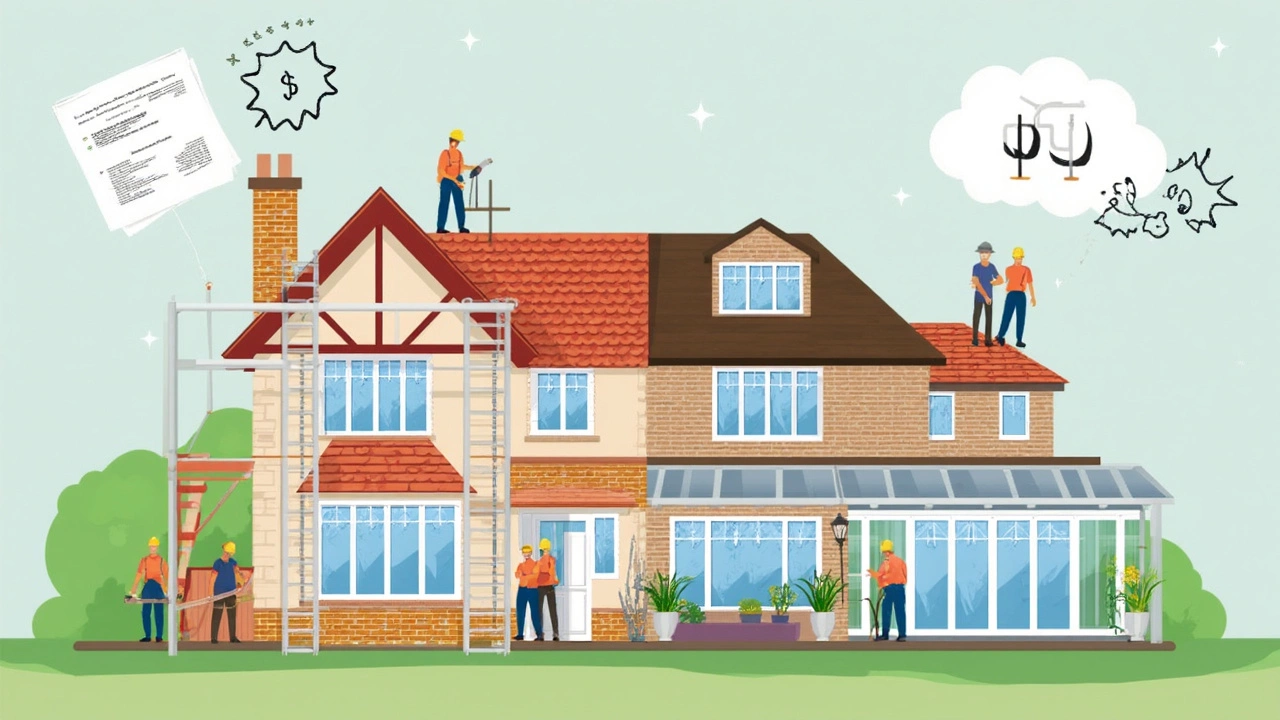
Speed Bumps Along the Way
Home extensions are like any road trip—plenty of bumps that can mess with your timeline and budget. People rarely talk about them upfront, but stuff like permit delays and unexpected structural issues can turn a simple project into a marathon.
If you build up, the biggie is your foundation. Old houses weren’t designed for extra stories, so you might have to beef it up before anything else. That’s not a cheap fix. There's also the headache of living in a construction zone. Contractors often need to open ceilings and redo electrical or plumbing lines. It’s not unusual for families to move out for weeks—if not months—while the work is done.
Expanding out avoids some headaches, but not all. You’ll deal with digging, which can unearth hidden surprises like old pipes or tree roots. If your lot lines are tight, zoning might slap down your plans. For example, some cities require properties to keep a set distance between the extension and the edge of your land—called a setback. Violate that, and your extension could get shut down before it starts.
- house extensions can mean electrical panel upgrades or relocating HVAC systems—not just throwing up new walls.
- Access for trucks and heavy equipment can be tricky, especially in tightly packed neighborhoods.
- You’ll probably need extra inspections for fire, safety, and code compliance. Each inspection costs cash and takes time.
Here’s a quick look at typical surprise costs homeowners report when building up vs. expanding out:
| Speed Bump | Build Up (Add a Floor) | Expand Out (Add Space on Ground) |
|---|---|---|
| Temporary Move-Out | Often Needed | Rarely Needed |
| Major Foundation Work | Common | Rare |
| Lost Yard Space | None | Often |
| Zoning Issues | Height Restrictions Possible | Setback Requirements |
| Roof Alteration | Always | Sometimes |
Big tip: Talk to your neighbors before starting. City rules often force you to notify them, and a single complaint can hold up your permits for weeks. It’s a lot smoother when you aren’t fighting a zoning board and angry neighbors at the same time. Plan ahead, expect roadblocks, and keep a cash buffer for those "unplanned" surprises.
Making the Smartest Choice for Your Wallet
When you’re stuck deciding between building up or expanding out, the easiest way to dodge regrets is to run the numbers—both the obvious ones and the hidden ones. It’s not just labor and materials; permits, inspections, and even the time your house is a construction zone all hit your wallet differently depending on your path.
If you’re eyeing the lowest upfront cost, expanding out is usually cheaper per square foot—unless you live somewhere with sky-high land prices or a postage-stamp yard. For most U.S. homes, ground-level additions cost between $130–$220 per square foot. Building up often runs higher, sometimes $180–$260 per square foot, partly because you need specialized pros to make sure your structure can take the weight. Things like extra engineering, moving plumbing, or upgrading your electrical panels all add up.
| Extension Type | Average Cost per Square Foot | Key Extra Costs |
|---|---|---|
| Build Out (Single Level) | $130–$220 | Foundation, yard work |
| Build Up (Add Second Story) | $180–$260 | Structural support, staircases, permits |
Then there’s resale value. According to Remodeling Magazine’s 2024 Cost vs Value report, adding bedrooms and baths (either up or out) recoups about 54–62% of its cost on resale, but two-story additions tend to give a slight edge in value for tight neighborhoods, where square footage is gold.
Don’t forget the control freaks—your local city planners. In some neighborhoods, setbacks and height restrictions will pretty much decide for you. If you can’t go out, your only bet is up, and vice versa. And utilities? Moving septic or water lines for a bump-out can drive up costs fast.
So, how can you save cash and headaches? Here’s what savvy homeowners do:
- Get detailed quotes—and push for breakdowns on labor, engineering, and materials.
- Double-check local codes and restrictions before getting attached to either plan.
- Budget for at least 15% more than your lowest estimate to cover surprises.
- Think long-term: Are you paying more now to save on future moves or value boosts?
- Work with a contractor who’s done house extensions like yours in your zip code—they’ll know the real-life costs and pain points.
If you’re only chasing more family space, a ground-level bump-out wins most of the time—unless your view, lot size, or the city rules force you upward. Either way, the best decision is the one that fits your goals, your budget, and the reality of your house and property.
